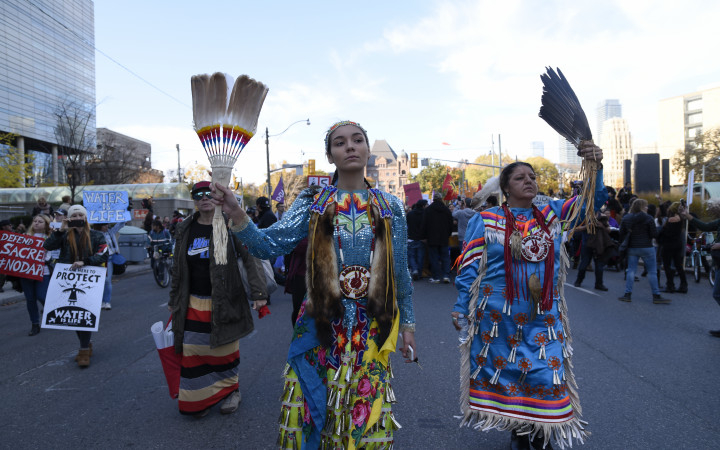Today’s Wonder of the Day was inspired by WonderTeam. WonderTeam Wonders, “Who are the Water Protectors?” Thanks for WONDERing with us, WonderTeam!
Have you ever stood on the shore of a clear lake? Have you heard the roar of a fast-moving river? Maybe you’ve watched ocean waves roll onto a beach. If so, you may already know just how powerful and important water is.
Over 70 percent of Earth’s surface is water—and over half of the human body is, too. Despite this, many people around the world have little access to clean water. Due to pollution of rivers, lakes, and oceans, this problem is expected to grow in the coming years.
A special group of people is set on protecting waterways. Called Water Protectors, they seek to cut back on water waste and pollution. They also speak out against practices that threaten clean water.
The Water Protector movement began in 2016 with the Standing Rock Sioux Tribe. They were driven by the respect for water taught by their culture. The Sioux stood up against a project called the Dakota Access Pipeline (DAPL).
This project’s goal was to build a pipeline to carry oil from North Dakota to Illinois. Its route would travel under a Missouri River reservoir called Lake Oahe. This sits just north of the Standing Rock Sioux Reservation. The Sioux fought back. They said the DAPL would threaten their access to clean water. They also claimed it would harm their sacred sites.
Soon, thousands of Indigenous leaders met at the DAPL site. They carried signs that said “Water is life” and similar messages. Water Protectors from over 300 American Indian tribes joined the Sioux. Many non-Indigenous people also supported the effort.
The Standing Rock protests were nonviolent. Still, they were often met with brutality. But the Water Protectors stayed. After a legal battle, the DAPL was built. It went into service in mid-2017. Its supporters argue that the pipeline provides the safest way to transport oil. Currently, the DAPL is undergoing an environmental review.
Water Protectors continue to defend waterways across North America. Currently, many are fighting against another pipeline called Line 3. Controlled by the energy company Enbridge, it will carry oil from Canada to Wisconsin. Water Protectors argue that it will harm the environment and violate Indigenous sovereignty.
What can you do? First, learn more. Ask a family member to help you find out the pros and cons of oil pipelines. Be sure to also read about Indigenous rights. Learn about the treaties the U.S. and Canada have signed with American Indian nations.
Does your family want to support Water Protectors? If so, follow the lead of the Indigenous organizers who built the movement. They’re acting on cultural practices that teach them to care for the planet.
Whatever your stance on oil pipelines, one thing is clear: Water is essential to life on Earth. What can you do to ensure clean water for the future?
Standards: C3.D2.Civ.13, C3.D2.Civ.14, CCRA.R.4, CCRA.L.3, CCRA.L.6, CCRA.R.3, CCRA.R.10, CCRA.R.1, CCRA.SL.4, CCRA.L.1, CCRA.W.7, CCRA.L.2, NCAS.A.1, NCAS.A.2, NCAS.A.3




